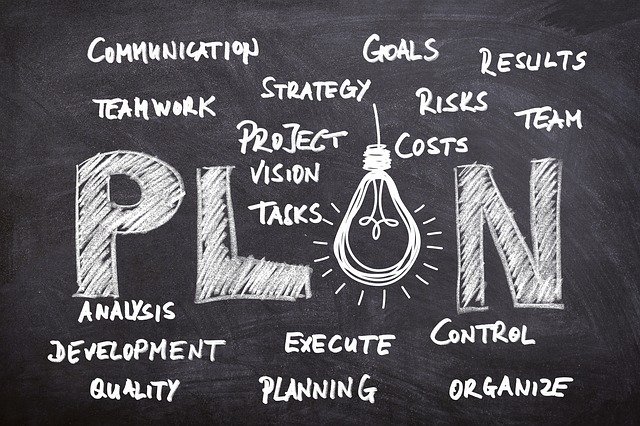Master Kanban vs Scrum, Checkout the key differences between Kanban vs Scrum frameworks in just a few hours! & apply them in your organization.
Kanban and Scrum, both are the subsets of Agile. The word Kanban comes from two Japanese words, “Kan” which means sign, and “Ban” meaning board.

During the period of world war, particularly, automobile industries hailing from Japan were struggling to survive. Their production was slugging and could not compete with other automobile giants in the world.
Today’s automobile giants (Toyota) came up with the plan of Kanban and the solution was to “produce what is needed and only when it’s needed”.
The first attempts to introduce the principles of Kanban into the IT industry for the software development were made probably in Microsoft.
To increase productivity, the development teams have started to add elements of Kanban vs Scrum as an extension to the existing models. This has resulted in the flourishing of the first successful Scrumban project in 2004.
Table of Contents
What is Kanban?
Kanban is a workflow management methodology devised to keep a birds-eye view on the work the team does and effectively maximize efficiency and be as agile as possible. Kanban visualizes the workflow vs the actual work that has been accomplished.
The goal of Kanban is to identify dormant bottlenecks in your process and fix them so work progress and can glide through it cost-effectively at optimal speed with guaranteed maximum throughput.
What is Kanban Principles?
The Kanban Method serves a set of four principles and practices for workflow management. It is an evolutionary methodology and a non-disruptive method that advocates gradual improvements to an organizational process.

Follow these principles and practices to succeed in maximizing the efficiency and improving the trust of the client in the business.
- Start with what you are doing this day
Kanban strongly recommends not to make any change to your current process. Kanban could be applied directly to the current working process and gradually change in the course of time avoiding the discomfort among the team members. - Incremental and gradual changes
Kanban assists you to make small incremental changes rather than taking big leaps which might lead to friction within the team and organization. - Respect current workflow, responsibilities and job-titles
Kanban does not force any organizational level changes or changes in the existing roles and functions which may be performing. The team may sit together to identify and implement the changes as and when needed. - Encourages leadership at all levels
Kanban encourages continuous enhancement at all levels of the organization and it believes there is already a leader in everyone and doesn’t have to be only from the senior managers level. All the team members can put forward their ideas and demonstrate their leadership skills to execute changes to continually improve as they deliver their products and services.
What is Core Practices in Kanban?
- Visualize
This is the first basic and fundamental step to adopt and implement the Kanban. You need to visualize it either on a whiteboard or on a workflow management tool. Depending on the complexity of your project and the work, your Kanban board can be made simple or may have to make an elaborate board to make it less complex if it is a complex project. Once you visualize your process, it would be easy for you and your team in accomplishing the work with ease.
This can be in the form of sticky notes with different colours to simply and identify the different work items. One of the work management tools that is frequently used is Trello. It offers both paid and free online Kanban boards. - Limit WIP (Work in Progress)
Limiting work-in-progress (WIP) is considered important to implement Kanban. By limiting WIP, you encourage your team to complete work that is already assigned to them and then take new tasks. Work that is currently in progress must be completed and checked as done. This helps the team to understand the open tasks and work on them. In the early stages, it might not be easy for you to decide what your WIP limits should be. Actually, you can start with determining WIP limits. Once you have enough data or have evaluated your limits, determine WIP limits for each stage of the workflow.
Limiting WIP and declaring the WIP limits for each column of the task board helps the team members to finish what they are doing currently before taking up new tasks. It also helps the stakeholders to understand the capacity of the team helping them to plan according to the later term. - Manage Flow
A Kanban system helps you manage flow by highlighting the status of work in each stage. Depending on how well the workflow is defined and WIP Limits are set, you will witness either a smooth flow or work piling up as something gets held up. Kanban helps the team investigate the system and make modifications to improve the flow so that it reduces the time it takes to complete each piece of work.A key perspective of this process observing the work and eliminate the bottlenecks. As you adjust the flow, your team’s delivery of work becomes smoother. It also becomes more predictable making it easier for you to make positive commitments to your customer and stakeholders about when the work can be delivered. Improving your ability to anticipate completion time will boost your morale. - Execute Process Policies Explicit
By forming explicit process guidelines, you formulate a common cornerstone for all participants to understand how the task can be done in the system. The policies can be formulated at the board level, or at the swim lane level or for each column on the board.They can be put forward as a checklist of steps to be done for each work item, like anything that helps team members manage the flow of work on the board. Examples of explicit policies include the definition of the task is when completed, the description of how/when/what a member can pull from individual lanes or columns etc. The policies must be established explicitly and visualized regularly on the top of the board and on all lanes and columns. - Execute Feedback Loops
Feedback loops are an indispensable part of any good practice. The Kanban encourages and helps you execute feedback loops of numerous kinds, analysis stages in your Kanban board workflow, metrics and reports and a range of visual ideas that provide you continuous feedback on work courses. The idea of accepting feedback early, particularly if you are on the incorrect track with your work, is vital to ultimately delivering the right task. This helps to deliver the right product or service to the customer in time. Feedback loops are important for guaranteeing this. - Amend Collaboratively, Emerge Experimentally
The Kanban is an evolutionary method. It helps you to accommodate changes and upgrade constantly and steadily keeping In mind the whole team. It helps to use the experimental method. You form a hypothesis, you put the assumption into the test and make changes depending on the outcome of the test. Your key task is to evaluate the process constantly and improve continuously.The result of each change that you make can be witnessed and measured using the various signals your Kanban tool provides you.
What is Seven Kanban Cadences?
There are 7 Kanban cadences classified into two groups:
- Service delivery meetings group
- Improvement meetings group
1. Service Delivery Meetings
I. Daily Kanban
The aim of the meeting is to recognize and trace the standing of work items and recognize the flow of work. The team gives progress of the work to the Delivery Planning meeting and Service Review.
Frequency: Daily
Duration: 15 minutes
II. Replenishment and Commitment
The aim of this meeting is to make informed decisions, supported by the team and stakeholders. The decisions are shared at the Daily Kanban and facilitate prioritizing incoming work and retaining a steady flow of work moving through the Kanban board.
Frequency: Weekly/as-needed
Duration: 20-30 minutes
III. Delivery Planning
The purpose of this meeting is to guarantee a smooth transfer of work in progress, and plan and decide what is to be delivered. Conclusions from this meeting are dispensed at Daily Kanban meetings. While issues are addressed at Risk Review.
Frequency: Variable – per delivery cadence
Duration: 1-2 hours

2. Improvement meetings
IV. Service Delivery Review :
During this meeting, the Service Delivery Manager shares progress and data from Daily Kanban, conclusions made at Operations Review, and activities from Risk Review meetings. This meeting also looks at the team’s abilities, sets objective customer, focused metrics. Here, the customer and managers strive to balance demand, set reasonable delivery rates and avoid unnecessary risks. The conclusions and decisions are then reported at Operations Review.
Frequency: bi-weekly
Duration: 30 minutes
V. Operations Review :
The purpose of this meeting is to examine the efficiency of distinct teams and the organization as a whole. Then, review the capacity of every Kanban team, concentrating on dependencies and their consequences. It is also a good time to recognize any underused capacity within the organization that can enhance lead times. The revision suggestions, decisions, changes and actions from this meeting are conferred at the Service Delivery Review and Strategy Review meetings.
Frequency: Monthly
Duration: 2 hours
VI. Risk Review
The purpose of the meeting is to classify problems at all levels of the organization and recognize the causes. Then, evaluate the risk associated with them and find a way to fix and bypass the same problems in the future. The data from the Risk Review meeting is shared and discussed at Delivery Planning.
Frequency: Monthly
Duration: 1-2 hours
VII. Strategy Review
The purpose of the Strategy Review is to recognize potential large-scale obstacles and find fitting solutions. The report and conclusions from Strategy Review are key for setting suitable KPIs, and holding thriving Operations Review and Service Delivery Review meetings.
Frequency: Quarterly
Duration: Half-day
What is Kanban Board?
A Kanban board is a project management tool devised to visualize work by maintaining only the amount of work for the team to complete the task without backlogs by limiting work-in-progress, helping to ramp up the efficiency.
Kanban board uses cards, columns, and continuous improvement to maintain technology and assist teams to perpetrate the right amount of work, and get it done!

Kanban Board Template
- Visual Signals
Kanban boards usually contain many visual cards (stickies, tickets, or otherwise). Kanban teams address all of their projects and work items on cards, usually one per card. - Columns
Another trademark of the Kanban boards is the columns. Each column depicts a particular task that collectively constitutes a “workflow”.Workflows can be bifurcated as “To Do,” “In Progress,” “Complete,” and many more. - Work In Progress (WIP) Limits
WIP limits are the highest number of cards that can be in one column at a time. A column with a WIP limit of two cannot have more than two cards in it. - Commitment Point
The commitment point is the instant when an idea is accumulated up by the team and work is started on the project. - Delivery Point
The delivery point is the end of a workflow. The delivery point is when the result or product is in the hands of the customer.
Kanban can be either the Traditional Billboard or the eBillboards. The eBillboards that are recently used are HeySpace, Trello, Kanban Tool, Smartsheet, Asana, Kanbanchi, Kanbanize, Monday.
Kanban Board Example
- Basic Kanban Board
This represents the basic workflow, a layout for teams that are new to Kanban,the beginners. it’s suitable for personal work as well.That may include simple columns like to-do,in progress and done. - Time Bound Kanban Board
This board is suitable for teams, with planned events for a quite long time,which is time bound and want their backlog work to be completed soon.They may include the columns like this sprint,this week,tomorrow,today,in-progress and done columns. - Event Bound Kanban Board
This version of a Kanban board is basically when the team wants to progress according to the completion of certain events as their milestones. The column for instance may include backlogs,waiting,ready to do,in progress and done. - Board for Product Development
This board can be used for the product development processes. It embraces a whole range of essential activities affiliated with a product development process. Gathering, assessing and analyzing information, throughout the development stages, quality assurance steps down to various stages. - Team Board for Sales
This variant supports the sales for describing and managing their activities. This helps the team to understand at ease whom they may have to contact for the work to be done. This helps in avoiding multiple emails irritating them. makes you stay on top of your sales action. - Board for Online Marketing
This variant of the Kanban board can be used to gather and manage all activities related to marketing campaigns and also online presence monitoring. A Schedule each item that needs to be dealt with, and plan your day accordingly! Once work has been done, but if you think still there is a need to be followed up, move the respective tasks to “Monitoring” and set a date for the same.
Kanban vs Scrum
| Sr. No | Kanban | Scrum |
| 1 | Continuous Flow | Fixed Length Sprints (Generally 2 Weeks) |
| 2 | No Specific Roles | Include roles of Scrum Master, Product Owner and Development Team |
| 3 | Continuous delivery | Release at the end of each Sprint |
| 4 | Lead time, cycle time, WIP are the measures of work | Velocity is used as a measure of the rate of completion with the burnout charts. |
| 5 | Change can happen at any time. | Teams cannot make changes during the sprint. |
| 6 | Kanban method focus on continuous improvement, productivity, and efficiency. | Scrum helps save time and money. |
Kanban and Scrum are effective and efficient in their own ways. We hope you have cleared with the Kanban vs Scrum concepts. Share your opinion on the same in the comments.
Also Check:
- Role of Scrum Master
- What is Agile Model – Advantages and Disadvantage?
- Extreme Programming in Agile Development



